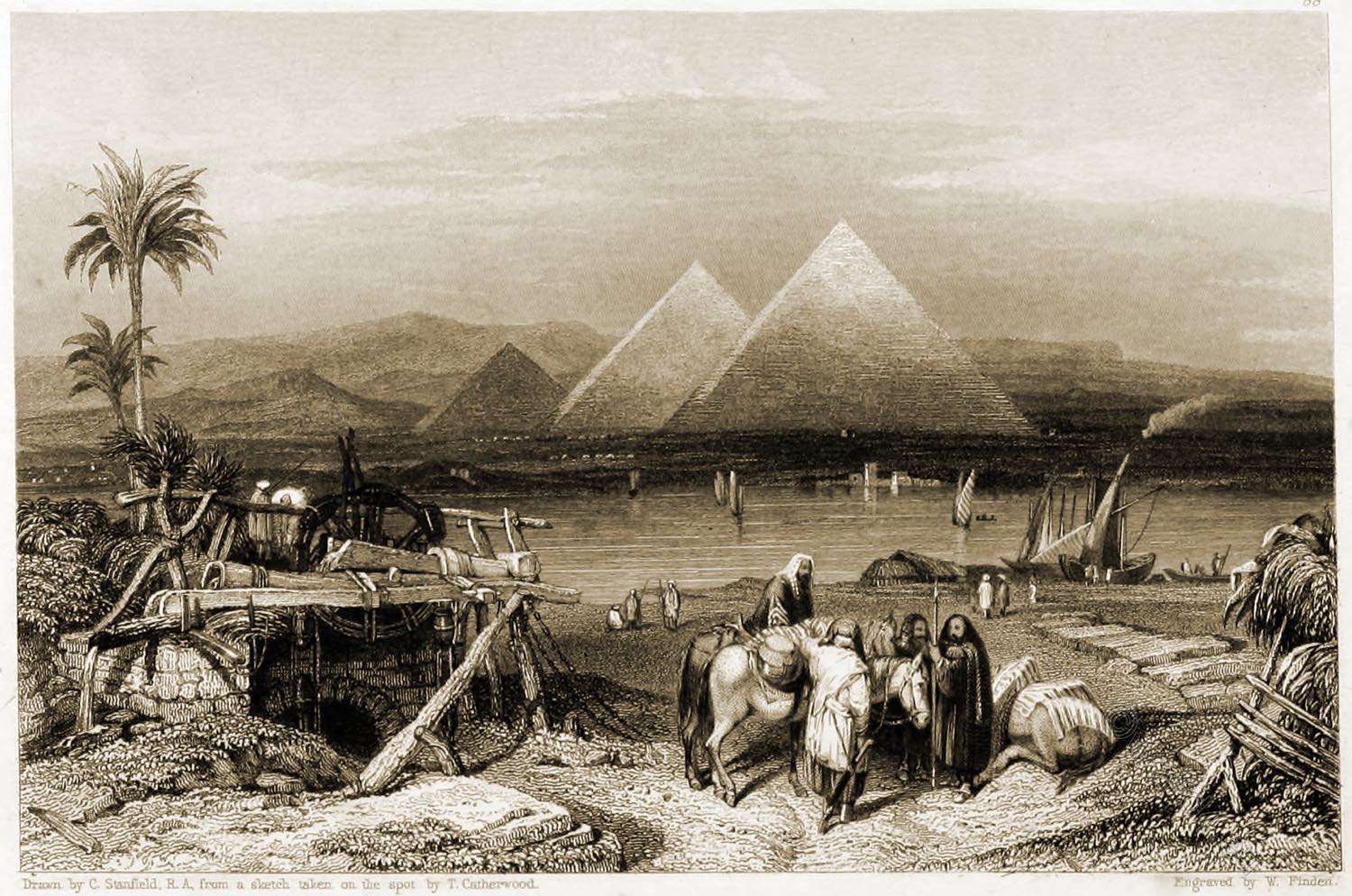
TEMPLE OF JUPITER OLYMPIOS AND RIVER ILISSOS.
THIS view is taken from the southern bank of the Ilissos *), in the vicinity of Fount Enneakrounos, or Kallirhoe, the site of which, however, is concealed by the water, and does not appear in the present view.
The river Ilissos, which forms so conspicuous a part of the present picture, is perfectly stream less during the greater part of the year; and it is only after violent and continued rains that it rushes down from Hymettos with impetuous rage. At this period it is impassable; but this seldom occurs more than once a year, and the event is so rare and extraordinary that the Athenians then resort to the river in crowds to enjoy the sight. The present view was made in order to preserve the memory of this unusual occurrence. Early in the morning of the 16th of September, 1805, a heavy storm, which burst upon Hymettos, converted in a few hours this stream less channel into a foaming torrent. The storm continued for twenty-six hours. On the 18th the stream was considerably diminished, and on the 20th it had ceased to flow.
The magnificent Corinthian temple, on the northern side of the Ilissos, was begun by Pisistratos, and finished by Hadrian, who dedicated it to the divinity of Jupiter Olympios. It was seven hundred years from its foundation before it was brought to perfection, and was one of the most magnificent temples in the world. Even in its present state of shattered dilapidation and mouldering decay it is one of the finest ruins in Greece, although only sixteen of its columns are standing out of one hundred and twenty-four, which it originally displayed. This venerable edifice is of Pentelic marble, and the columns, including the capitals, are apparently about fifty-five feet in height, although they have never been accurately measured, as no ladder is found in Athens of sufficient height to reach to their capitate.
The upper part of the arch of Hadrian is seen between the columns, but the loner part is concealed by the rising of the ground.
The acropolis exhibits at the same time its eastern extremity, and its southern side, surmounted by the magnificent columns of the Parthenon. No object in the picture can compare with this in beauty and in interest. Lower down the eye glances upon the choragic monument of Thrasyllos, the tripodial columns the site of the theatre of Bacchus, and the more perfect remains of the theatre of Herodes Atticus. On the left end of the view is the hill of Musaeus, crowned with the monument of Philopappos.
Mount Anchesmos also constitutes a striking feature in the view, but it embraces only a small part of Panics and Pentelikon. These, with several more distant objects, have been sacrificed by taking the view from a low point, in order to give more striking pre-eminence to the foreground, and the cascades of the Ilissos.
*) The Ilisos (Greek Ιλισός, also Ιλισσός, Ilissos) is a small, mostly arid river flowing through the plain of Athens in Greece. It rises at the Hymettos Mountains, flows southwest, touching the ancient centre of the city, and flows into the Saronic Gulf at Paleo Faliro (Today, the river is covered by several important road axes).
Source: Views in Greece. Drawings by Edward Dodwell. Rod Well and Martin, London, 1821.
Continuing
Discover more from World4 Costume Culture History
Subscribe to get the latest posts sent to your email.






